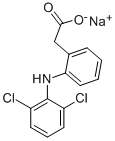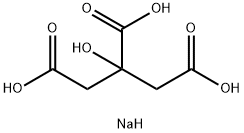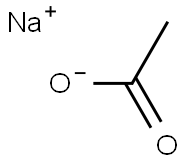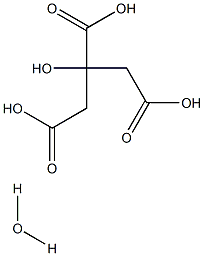Sodium cacodylate trihydrate
Synonym(s):Cacodylic acid sodium salt trihydrate;Cacodylic Acid, Sodium Salt, Trihydrate - CAS 6131-99-3 - Calbiochem;Dimethylarsinic acid sodium salt;Dimethylarsonic acid sodium salt;Sodium Dimethyl Arsenate
- CAS NO.:6131-99-3
- Empirical Formula: C2H10AsNaO3
- Molecular Weight: 180.01
- MDL number: MFCD00149079
- EINECS: 682-793-9
- SAFETY DATA SHEET (SDS)
- Update Date: 2025-10-14 17:34:16

What is Sodium cacodylate trihydrate?
Chemical properties
Sodium cacodylate is a white crystalline solid which occurs as the trihydrate. It liquefies in the water of hydration @ 60°C and becomes anhydrous @ 120°C.
The Uses of Sodium cacodylate trihydrate
Sodium cacodylate trihydrate has been used in the stabilization of the fixatives for electron microscopy. It has also been used to collect vibratome sections to perform nucleoside-diphosphatase technique.
The Uses of Sodium cacodylate trihydrate
Sodium cacodylate trihydrate has been used as a buffer to fix cells for transmission electron microscopy and as a buffer to fix cells for scanning electron microscopy.
What are the applications of Application
Cacodylic acid sodium salt trihydrate is an arsinate compound for proteomics research
Biological Functions
Cacodylic acid sodium salt is used as a buffer (pH buffering range of 5.1 - 7.4), especially for bactericidal buffers used in electron microscopy. The buffering capacity of cacodylate prevents excess acidity that may result from tissue fixation. It is also used in protein crystallisation.
General Description
Sodium cacodylate is an organic arsenic compound that is metabolized to produce inorganic, trivalent arsenicin vivo. Sodium cacodylate has been used as a source of arsenic in toxicological research. It is used as a buffer with an effective pH buffering range of 5.1-7.4. In microscopy studies, the buffering capacity of cacodylate prevents excess acidity that may result from tissue fixation.
Potential Exposure
This material has been used as a nonselective herbicide and for general weed control.
Shipping
UN1688 Sodium cacodylate Hazard Class: 6.1; Labels: 6.1-Poisonous materials. UN3465 Organoarsenic compound, solid, n.o.s., Hazard Class: 6.1; Labels: 6.1Poisonous materials, Technical Name Required
Incompatibilities
Incompatible with oxidizers, strong bases; acids, active metals (iron, aluminum, zinc). Contact with acids react to form highly toxic dimethylarsine gas. Attacks some metals.
Waste Disposal
For cacodylic acid, precipitate as calcium arsenate and calcium arsenite by treatment with excess lime water. Recycle if possible. If not, put in secure storage for possible disposal in leach-proof dumps. In accordance with 40CFR165, follow recommendations for the disposal of pesticides and pesticide containers. Must be disposed properly by following package label directions or by contacting your local or federal environmental control agency, or by contacting your regional EPA office.
Properties of Sodium cacodylate trihydrate
| Melting point: | 77-80 °C |
| storage temp. | room temp |
| solubility | H2O: 0.5 M at 20 °C, clear, colorless |
| form | Solid |
| color | White |
| PH | 9.0-9.5 (100g/l, H2O, 20℃) |
| Water Solubility | Soluble in water and alcohol. Insoluble in diethyl ether. |
| Merck | 14,8595 |
| BRN | 3702348 |
| CAS DataBase Reference | 6131-99-3(CAS DataBase Reference) |
Safety information for Sodium cacodylate trihydrate
| Signal word | Danger |
| Pictogram(s) |
 Skull and Crossbones Acute Toxicity GHS06  Health Hazard GHS08  Environment GHS09 |
| GHS Hazard Statements |
H350:Carcinogenicity H410:Hazardous to the aquatic environment, long-term hazard |
| Precautionary Statement Codes |
P201:Obtain special instructions before use. P202:Do not handle until all safety precautions have been read and understood. P261:Avoid breathing dust/fume/gas/mist/vapours/spray. P273:Avoid release to the environment. P301+P310:IF SWALLOWED: Immediately call a POISON CENTER or doctor/physician. |
Computed Descriptors for Sodium cacodylate trihydrate
Sodium cacodylate trihydrate manufacturer
ALPHA CHEMIKA
New Products
4,4-Difluoropiperidine hydrochloride tert-butyl 9-methoxy-3-azaspiro[5.5]undecane-3-carboxylate Indole Methyl Resin N-Isopropylurea N,N-Dicyclohexylcarbodiimide(DCC) MELDRUMS ACID 5-METHYLISOXAZOLE-4-CARBOXYLIC ACID Magnessium Bis glycinate Zinc ascorbate 1-bromo-2-butyne 2-acetamidophenol 9(10H)-anthracenone Erythrosin B, 4-Piperidinopiperidine 2-((4-morpholinophenylamino) (methylthio) methylene) malononitrile 2,4-dihydroxybenzaldehyde 3-(4-morpholinophenylamino)-5-amino-1H-pyrazole-4-carbonitrile Methyl 2-methylquinoline-6-carboxylate 2,6-dichloro-4-nitropyridine 4-Bromo-2-chlorobenzonitrile 2-(benzylamino)acetic acid hydrochloride 4-(tert-Butoxycarbonylamino)but- 2-ynoic acid 3,4-dihydro-2H-benzo[b][1,4]dioxepine 1-Phenyl-1-cycloprppanecarboxylicacidRelated products of tetrahydrofuran








You may like
-
 SODIUM CACODYLATE 6131-99-3 99%View Details
SODIUM CACODYLATE 6131-99-3 99%View Details
6131-99-3 -
 Cacodylic acid sodium salt trihydrate CAS 6131-99-3View Details
Cacodylic acid sodium salt trihydrate CAS 6131-99-3View Details
6131-99-3 -
 Sodium cacodylate, trihydrate, ≥98% CAS 6131-99-3View Details
Sodium cacodylate, trihydrate, ≥98% CAS 6131-99-3View Details
6131-99-3 -
 Sodium Cacodylate Trihydrate CAS 6131-99-3View Details
Sodium Cacodylate Trihydrate CAS 6131-99-3View Details
6131-99-3 -
 Sodium cacodylate trihydrate CAS 6131-99-3View Details
Sodium cacodylate trihydrate CAS 6131-99-3View Details
6131-99-3 -
 Cacodylic Acid, Sodium Salt, Trihydrate CAS 6131-99-3View Details
Cacodylic Acid, Sodium Salt, Trihydrate CAS 6131-99-3View Details
6131-99-3 -
 Sodium cacodylate trihydrate CAS 6131-99-3View Details
Sodium cacodylate trihydrate CAS 6131-99-3View Details
6131-99-3 -
 Sodium cacodylate trihydrate CAS 6131-99-3View Details
Sodium cacodylate trihydrate CAS 6131-99-3View Details
6131-99-3
